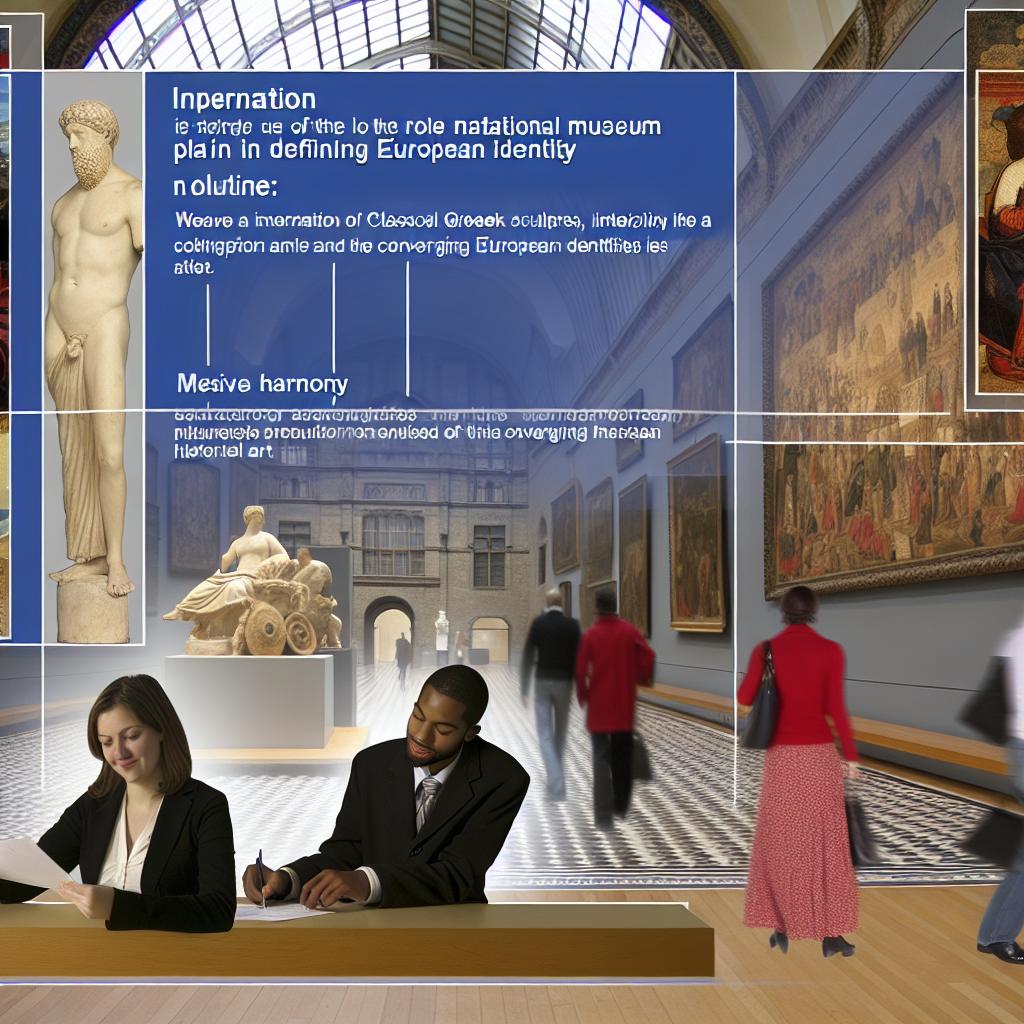The Role of National Museums in Defining European Identity
National museums are pivotal in shaping and articulating European identity, primarily by acting as the guardians of cultural heritage. These institutions house extensive collections that document the continent’s rich and varied history, underscoring both the commonalities and unique aspects of European nations. Through their exhibitions, programs, and cultural initiatives, national museums capture the essence of European integration, while also honoring distinct national histories.
The Historical Context
National museums as we know them today took shape in the 18th and 19th centuries. This was a significant period for Europe, characterized by the development of modern nation-states and a growing sense of nationalism. During this era, museums emerged as keepers of national patrimony, tasked with cultivating a sense of national pride and identity. In Europe’s unique landscape, where histories transcend borders, museums have often intertwined local narratives with broader continental experiences, creating an intricate tapestry of stories that define European identity.
Initially, these institutions served as repositories for objects that represented the power and prestige of a nation. However, as Europe shifted towards a more interconnected identity, these museums embraced a dual role: they became platforms for promoting national history while also emphasizing a shared European past. By exhibiting artifacts and stories that cross national lines, national museums began to craft a narrative that values both national uniqueness and collective European experiences.
Functions of National Museums
One of the foremost functions of national museums is educational. These institutions provide invaluable access to historical artifacts, art pieces, and exhibitions, serving as critical pedagogical resources. Through curated displays and informative interpretation, museums enable visitors to explore the collective European past, offering insights into the shared experiences and values that have shaped the continent.
Moreover, museums play an essential role in the preservation of cultural artifacts. By safeguarding objects of historical importance, these institutions ensure that future generations maintain a tangible connection to the past. This stewardship is crucial for ongoing identity formation, providing society with the tools to understand and reflect upon its heritage.
Creating a Shared European Narrative
National museums contribute to the creation of a shared European narrative by curating exhibitions that resonate across national borders. Themes such as the Renaissance, Enlightenment, or the transformative impact of major historical events like the World Wars highlight shared dynamics that have influenced European societies. This thematic curation underscores unity and fosters a sense of cohesion by drawing attention to the interconnectedness of European cultures.
Through these exhibitions, museums offer a broader perspective that transcends isolated national histories. By showcasing how European cultures have influenced each other and contributed to shared advancements, these institutions encourage a pan-European outlook that values diversity within unity. This approach not only strengthens the European identity but also celebrates the rich mosaic that defines the continent.
Challenges and Debates
While national museums play an instrumental role in promoting European identity, they also grapple with a multitude of challenges. One significant issue is the representation of colonial histories and contested artifacts. Differing interpretations of historical events and the lingering effects of colonialism pose complex questions about whose stories are told and prioritized. In this regard, museums face the ongoing challenge of addressing these histories openly and inclusively, engaging in dialogues that embrace multiple perspectives and experiences.
The digital age further amplifies both opportunities and challenges for national museums. Advances in technology, such as digital collections and virtual tours, offer broader access to museum content, promoting a more inclusive understanding of European identity. However, this digital transformation necessitates continuous innovation from museums to stay relevant and engaging to global audiences. The shift requires them to balance traditional methods of curation with digital initiatives that capture the interest of a wide range of visitors.
Conclusion
National museums stand as vital entities in the ongoing exploration and definition of European identity. By curating exhibitions that highlight shared and distinct historical experiences, they contribute to a nuanced understanding of European identity. These institutions are integral in constructing narratives that celebrate both unity and diversity within Europe, providing spaces for reflection and dialogue on the continent’s past, present, and future.
As Europe continues to evolve and face new challenges, national museums will remain central to interpreting and defining what it means to be European. Through their stewardship of cultural heritage, educational endeavors, and commitment to inclusivity, these institutions are indispensable in the ever-unfolding story of Europe, offering a platform for audiences to engage with and appreciate the continent’s complex identity.
In summary, national museums, by serving as custodians of history and cultural heritage, facilitate a deeper understanding of European identity. As they contend with challenges and embrace new technologies, they remain vital in fostering an inclusive and comprehensive narrative of what it means to be European, ensuring that both shared and diverse histories are celebrated and preserved for future generations.

